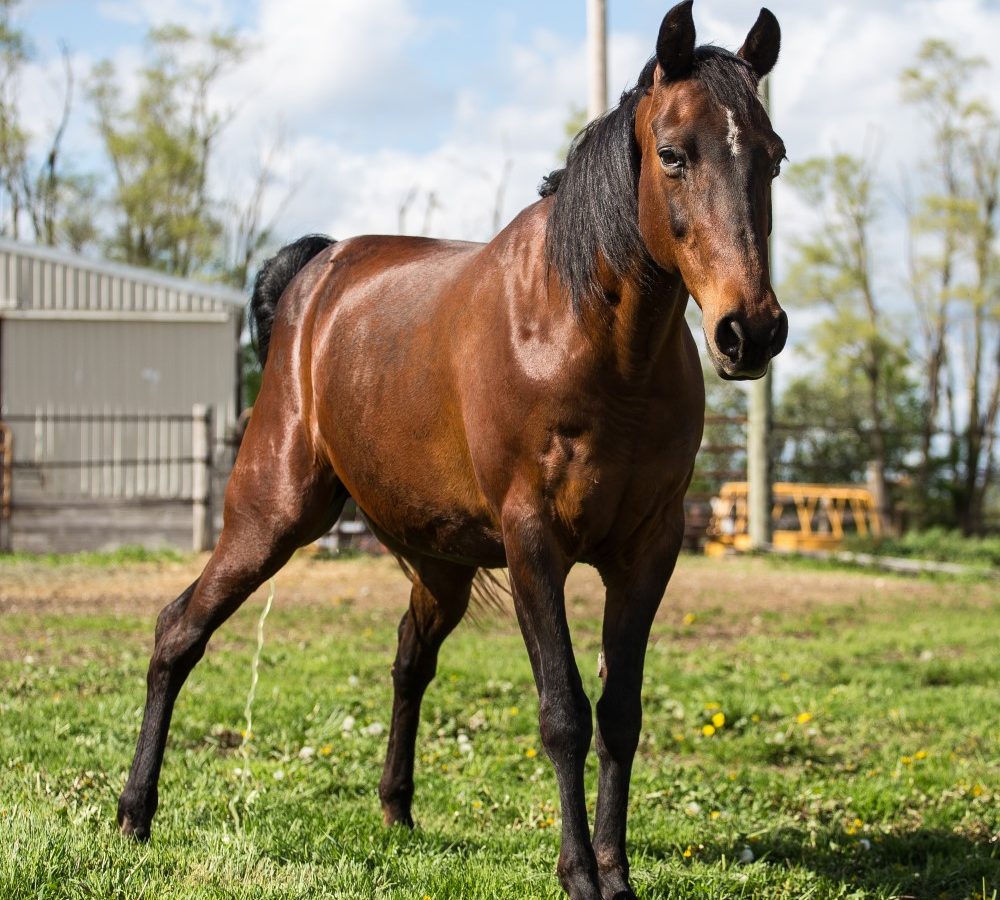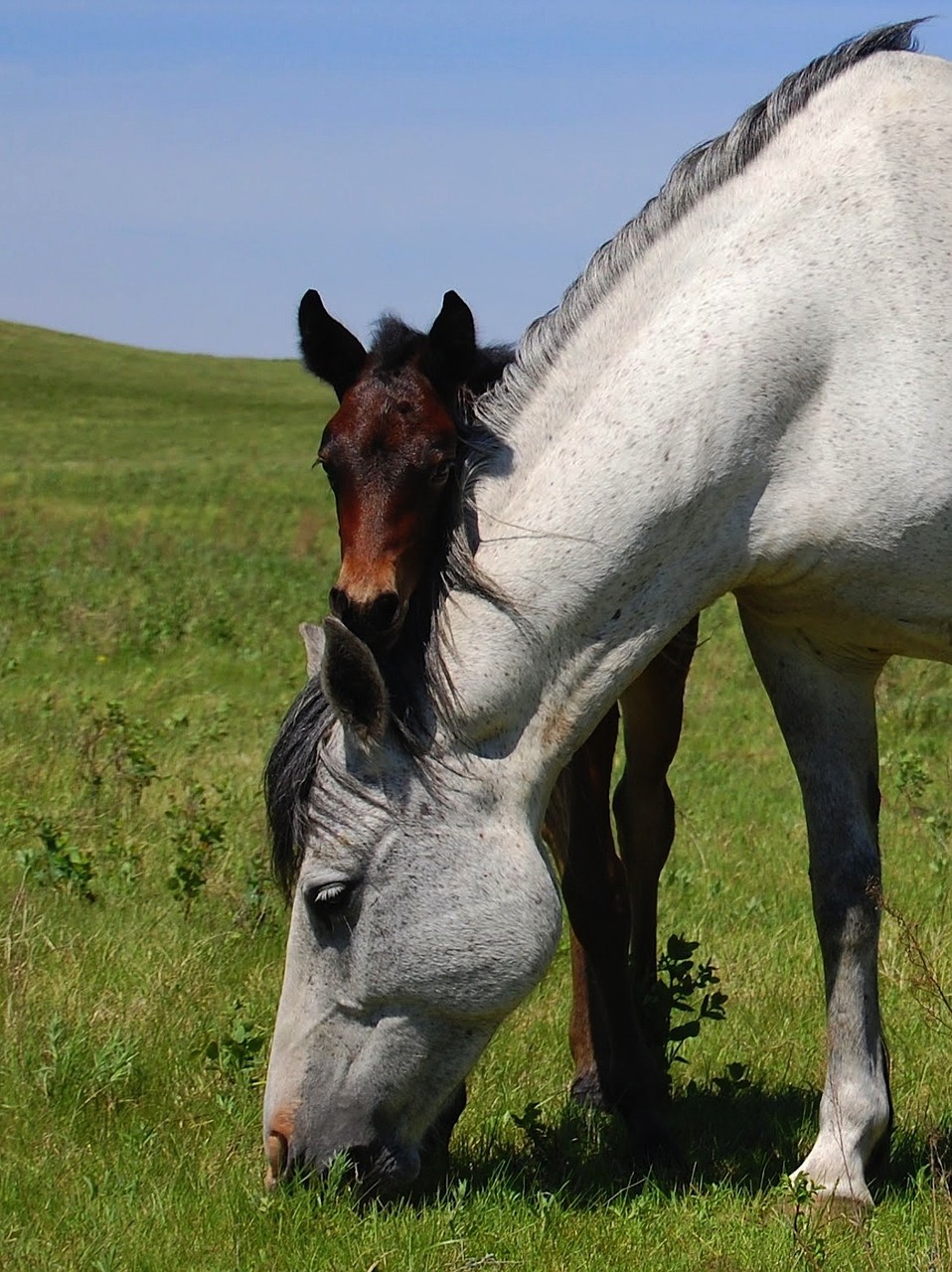One of the most common tumours of a mare’s reproductive system, granulosa cell tumours are generally benign. However, they can reach a decent size and inflict pain as well as lead to problematic behavioural changes.
Granulosa cell tumours originate from the granulosa cells of the ovary and are the most common tumours of the female equine reproductive system. They are sometimes referred to as “granulosa thecal cell tumours” if the ovary contains tumorous thecal cells as well the tumorous granulosa cells. Both cell types (granulosa and thecal) are present in the ovaries, with granulosa cells producing oestrogens and progesterones, and thecal cells producing testosterone and progesterones.

In this article, I shall refer to both as granulosa cell tumours (GCT). These tumours can occur in females of all ages but are more common in middle-aged mares. They have been reported to have occurred in neonates and young horses, but this would be rare compared to the average age of diagnosed mares – which is around 11 years of age. Though it is a rare occurrence, it has also been detected in pregnant mares.
These tumours are generally benign, meaning they do not metastasise to other organs in the body. However, depending on how fast these tumours grow and how quickly they are diagnosed, they can become very large, with cases up to 40cm having been reported.
GCT are hormonally active tumours, meaning they continue to produce hormones – anti-Mullerian hormone (AMH), inhibin, testosterone, oestrogens and progesterones. These hormones are then released into the circulation and bring about changes in the body, related to their biological effects.
In the normal mare these hormone levels are under a feedback control system involving the brain and the ovaries. When high levels are detected in the blood there is a negative signal sent to tell the ovaries to reduce/stop hormone production, thereby reducing the levels of hormone into the bloodstream. This rise and fall of hormones is the key to orchestrating the normal reproductive cycle of the mare, which is usually around 21 days – 16 days in anoestrus (not in season) and 5 days in oestrus (in season).
BEHAVIOURAL CHANGES
In mares with GCT, the normal feedback control no longer works, with the tumorous cells continuing to produce hormones, allowing high levels of unregulated hormones to circulate in the body and produce behavioural changes.
“The development of increased
aggression or continuous cycling
is usually more obvious to owners.”
The three most common changes in behaviour seen in mares with GCT are:
• Persistent anoestrus, or the lack of cycling – this means the mare does not come into season during the spring and summer months when most mature female equids would.
• Persistent oestrus behaviour or nymphomania – this means the mare continues to display signs of being in season, including squatting to pee in front of other horses, squealing, winking (exposing their clitoris), and posturing to be served throughout the year.
• Aggressive behaviour, described as stallion-like behaviour towards other horses and humans and can include physical characteristics such as a neck crest as seen in entire males.

These behavioural characteristics that are related to high levels of circulating hormones will differ with the different hormone levels produced by each tumour. Those GCT tumours producing a lot of testosterones are usually associated with mares showing more stallion-like traits, whereas high levels of AMH and inhibin can stop follicles developing and prevent the mare cycling.
Whilst some people don’t notice that their mare hasn’t come into season for many months, the development of increased aggression or continuous cycling is usually more obvious to owners, prompting them to have their mare examined. This is because aggression and nymphomania interfere with the normal day-to-day routines horse owners have with their mares, especially if the mare did not display any of these behaviours previously.
Persistent anoestrus is more likely to be recognised in mares used for breeding, as their cycles are closely monitored to allow a scheduled mating to occur.
GCT can be detected because of other clinical signs that are unrelated to hormonal changes but relate to the physical size of the tumour and the pain or discomfort it causes, particularly in relation to mares in training or being used for equestrian events. Some GCT present because of poor performance or low-grade pain because of the size these tumours can grow to.
I diagnosed a large ovarian tumour in a mare where the complaint was related to pain and reduced performance and had nothing to do with hormonal changes. As these tumours develop slowly, any pulling of the ligaments or stretching of the covering of the ovary occurs gradually and this enables the horse to adapt to the discomfort. In this case, however, the mare had a GCT the size of a basketball and was very uncomfortable and unhappy jumping. This was because the act of jumping caused the ovary to swing about and pull on the attached soft tissues as she landed, causing abdominal pain that was originally mistaken to be musculoskeletal pain.

CLINICAL SIGNS
There are a few cases where a GCT has been detected following these tumours bleeding and rendering the horse weak and lethargic due to the blood loss. These mares would have had clinical signs directly related to the blood loss including pale mucus membranes, low red cell counts, and blood in the abdomen.
Veterinary practitioners skilled in rectal palpation can make a preliminary diagnosis of a GCT based on the large size of the ovary, the consistency it palpates, the lack of an ovulation fossa, and the reduced size of the contralateral ovary, but confirmation is usually done with ultrasonography and blood tests. Many GCTs have a characteristic honeycombed or small cyst-like appearance with areas of fibrous tissue and a lack of normal ovarian stromal tissue. The ovary on the other side is small and has no or very few follicles visible and there is seldom evidence of ovulation tissue. This will change depending on how long the tumour has been active as in the early stages of the tumour, some follicular activity may be apparent – but the longer the tumour is allowed to grow and secrete hormones, the more atrophied and nonfunctional the contralateral ovary will become. The exception to this would be in the rare case of bilateral ovarian GCTs occurring, and in these cases hormonal assays are the only way to confirm the diagnosis.
GCT release high levels of hormones (anti-Mullerian hormone, testosterone, and inhibin) that circulate and are detected via receptors in the brain and on the contralateral ovary, causing suppression of follicular development in this ovary. Using this knowledge, tests have been developed to detect elevations in theses hormones to confirm a diagnosis of a GCT. Currently, AMH levels are the most accurate hormone assays to confirm the presence of a GCT, with their sensitivity being close to 98%.
Several decades ago, inhibin was the hormone of choice for detecting these tumours, but it was less accurate at confirming the tumour and more difficult to get a laboratory to perform, so is infrequently performed now. Testosterone has also been used as an indicator of GCT but can be elevated for other reasons and is much less reliable in detection of a positive case.
TREATMENT OF CHOICE
Treatment of choice is surgical removal of the affected ovary, and this can be performed several ways. The preferred method is to remove the affected ovary whilst the mare is heavily sedated rather than using a general anaesthesia, although this is not always possible.
Depending on the size of the tumour, most are removed through a flank incision on the side of the affected ovary, although there are some cases where the ovary is removed through the vagina (colpotomy). The use of laparoscopic techniques using a small camera and long-handled equipment is the preferred method, however, this procedure is limited by the size of the tumour and the blood vessels that feed the tumour.
In cases where the blood supply is too large and unable to be ligated or crushed by the laparoscopic instruments, the tumours need to be removed in a more invasive manner. When the blood supply can successfully be clamped and transected, large tumours can be decreased in size by sucking out the fluid found in the cystic structures to reduce the mass and make it easier to remove.
Complications can occur, as it can with any surgery, and these include haemorrhage from the ovarian pedicle, damage to other internal organs during the procedure, post-operative colic and infection. In cases where a general anaesthesia is used and the tumour is removed via a mid-line incision, the complication rate is higher, with the added risk of wound breakdown and an increased risk of infection. In those rare cases where a tumour is detected on both ovaries, it is necessary to remove both ovaries surgically.

Mares that have had the GCT removed successfully will often return to breeding with the smaller ovary returning to normal cyclic behaviour when the hormonal suppressants are removed. This takes on average 6-8 months to occur, however, the interval will be affected by the time of the year the GCT is removed. Mares that have a tumour removed in winter or early spring may not cycle again until the following spring as they will go into a normal period of anoestrous over winter before returning into oestrus when the daylight starts to lengthen, and weather begins to warm. EQ
YOU MIGHT ALSO LIKE TO READ BY DR MAXINE BRAIN:
Being a Horse in Africa – Equestrian Life, August 2023
Splint Bone Fractures – Equestrian Life, July 2023
When Horses Choke – Equestrian Life, June 2023
The Challenge of Treating HPSD – Equestrian Life, May 2023
From the Horse’s Mouth: Salivary Glands – Equestrian Life, February 2023
Cardiac Murmurs – Equestrian Life, February 2023
Matters of the Heart – Equestrian Life, January 2023
Umbilical Concerns in Foals – Equestrian Life, December 2022
Retained Foetal Membranes – Equestrian Life, October 2022
Preparing for Laminitis – Equestrian Life, September 2022
Working Together for Best Outcomes – Equestrian Life, August 2022
What Constitutes an Emergency – Equestrian Life, July 2022
Peri-Tarsal Cellulitis Calls for Quick Action – Equestrian Life, June 2022
Sinusitis: Not To Be Sneezed At – Equestrian Life, May 2022
Japanese Encephalitis: No Cause For Alarm – Equestrian Life, April 2022
Hernia Learning Curve – Equestrian Life, March 2022
Osteochondromas: Benign But Irritating – Equestrian Life, February 2022
Don’t Forget the Water – Equestrian Life, January 2022
Understanding Anaesthesia – Equestrian Life, December 2021
A Quick Guide to Castration – Equestrian Life, November 2021
Caring for Mammary Glands – Equestrian Life, October 2021
Sepsis In Foals – Equestrian Life, September 2021
Understanding Tendon Sheath Inflammation – Equestrian Life, August 2021
The Mystery of Equine Shivers – Equestrian Life, July 2021
Heads up for the Big Chill – Equestrian Life, June 2021
The Ridden Horse Pain Ethogram – Equestrian Life, May 2021
The Benefits of Genetic Testing – Equestrian Life, April 2021
Heavy Metal Toxicities – Equestrian Life, March 2021
Euthanasia, the Toughest Decision – Equestrian Life, February 2021
How to Beat Heat Stress – Equestrian Life, January 2021
Medicinal Cannabis for Horses – Equestrian Life, December 2020
Foal Diarrhoea Part 2: Infectious Diarrhoea – Equestrian Life, November 2020
Foal Diarrhoea (Don’t Panic!) – Equestrian Life, October 2020
Urticaria Calls For Detective Work – Equestrian Life, September 2020
Winter’s Scourge, The Foot Abscess – Equestrian Life, August 2020
Core Strengthening & Balance Exercises – Equestrian Life, July 2020
The Principles of Rehabilitation – Equestrian Life, June 2020
When is Old, Too Old? – Equestrian Life, May 2020

